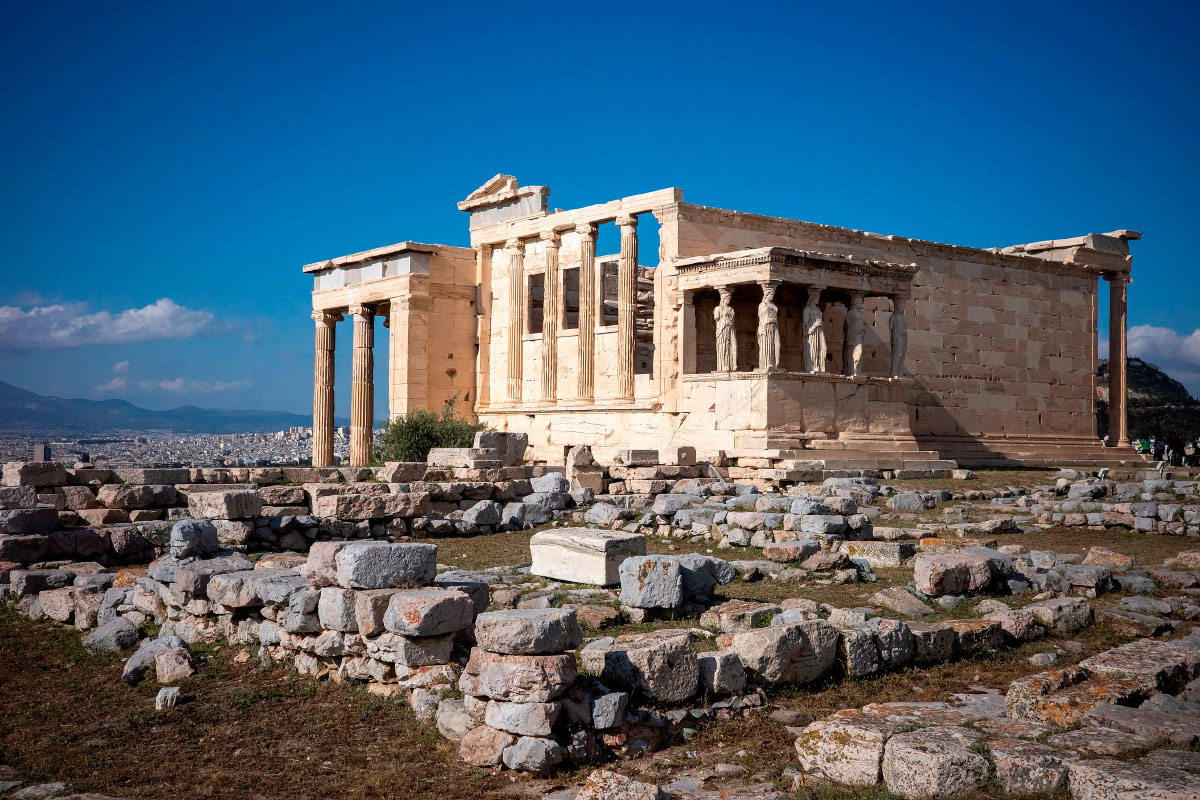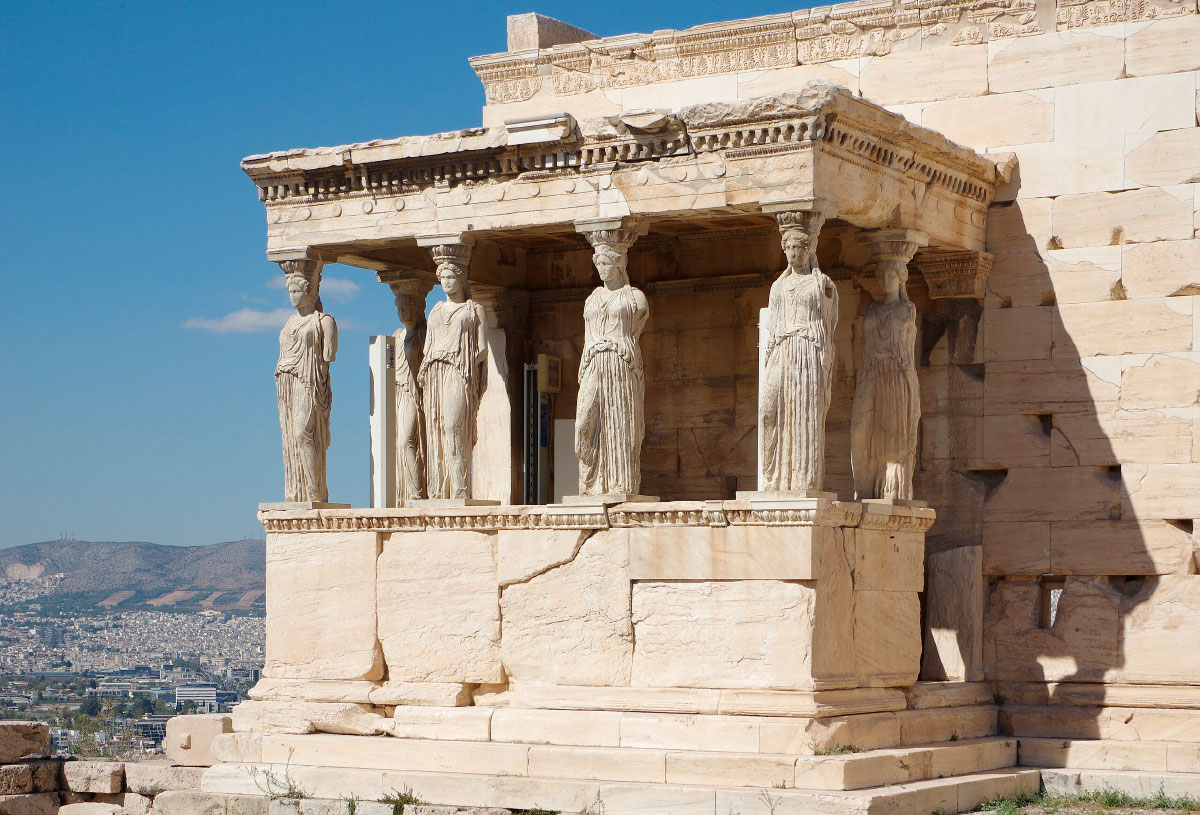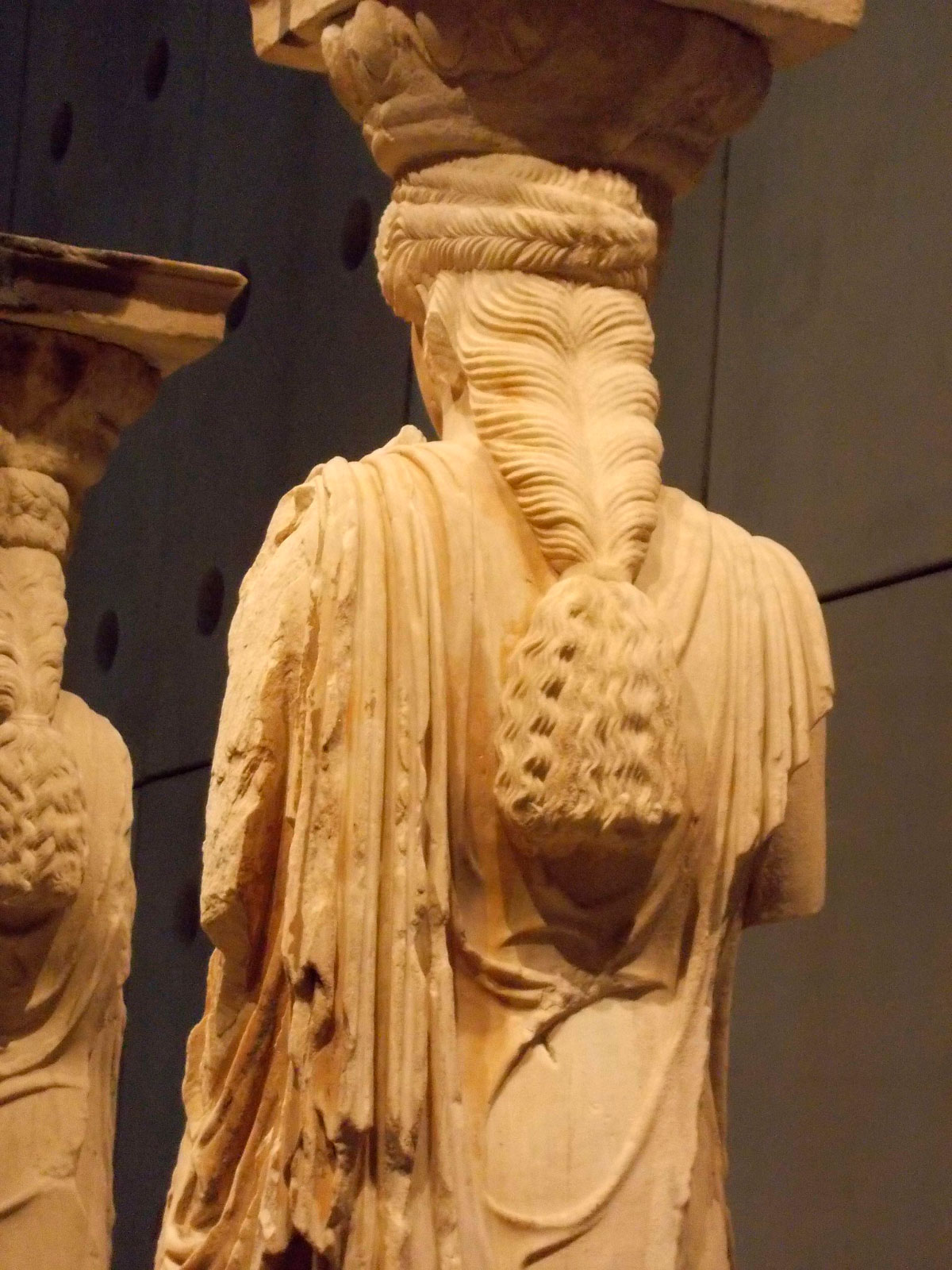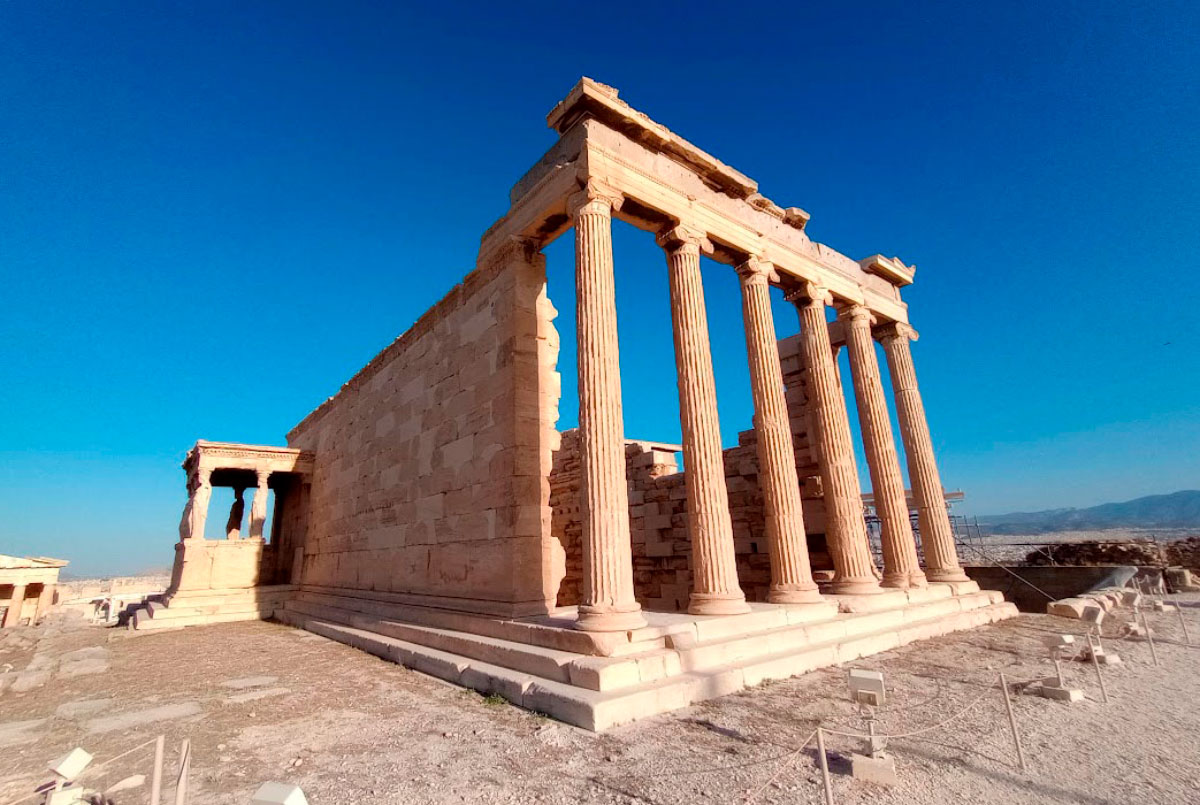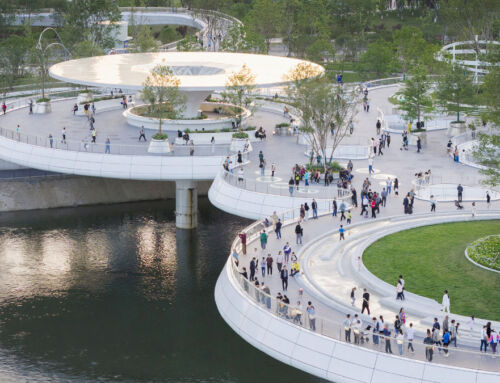The Erechtheion temple on the north side of the Acropolis in Athens, Greece, has defied time since its construction – around 2 decades after the Parthenon – between 421 and 406 BC. The building, which is of Ionic apterous order, is named after the mythical King Erechtheus, a figure who, along with the goddess Athena Polias and the god Poseidon, was worshipped there. But what is perhaps most interesting and what has marked the architecture of all times is its southern portico. Six maidens sculpted in marble from Mount Pentelicus, hold the entablature of this part of the Erechtheion with calculated precision and a paradoxical gesture that is both eternal and everyday. They guard the threshold which, one might say, separates the sacred from the profane. These six enigmatic figures of petrified humanity and a gesture somewhere between trivial and ironic are the caryatids.
It was not until the 1st century BC that Roman architect and engineer Marcus Vitruvius Pollio named them in Latin, in his work De Architectura – from which the proportions Leonardo Da Vinci took to create his famous ‘Vitruvian Man’ – that they became known as such. According to the architect of Rome, the caryatids make sense as a representation of the punishment and condemnation to slavery of the women of the ancient city of Carias, near Sparta in Lacedaemonia at the time, for siding with Persia and thus betraying Athens in the Greco-Persian Wars (492-449 BC).
However, archaeologists question Vitruvius’ explanation, as they have traced the use of female figures on arcades, columns, pilasters and decorative elements long before the Median Wars. Some of the earliest known examples were found at Delphi, including, perhaps the most significant, the two custodian caryatids – only one of which is partially preserved – of the building that housed the offerings of the city-state of Sifnos, dating from the 6th century BC. They are still seen in vestiges from more remote times, such as on the feet of ritual vessels or on the ivory handles of mirrors from the Phoenician period.
In fact, as we read on the Acropolis Museum website, “replacing the columns with female statues was a common Greek architectural practice since the Archaic period. These statues are called merely Korai in the building inscriptions of the temple”. In Greek, “korai” is the plural term for “maiden”, referring to a sculptural typology from the Archaic period of Ancient Greece that consisted of a female statue in a standing position.
Of the many interpretations of the meaning of the caryatids, “the most convincing” according to the Acropolis Museum is that the caryatids were part of “an above-the-ground monument over the grave of the mythical Kekrops” – in Greek mythology, the first king Athens had. In their hands they would carry phialas, a kind of simple vessel, representing the libations with which the Greeks honoured the heroic king.
The composition of the caryatids corresponds to the careful study of proportions that the sculptor Polyclitus the Elder established in his Canon – of which only a few fragments have survived and which is better known through references by later authors. According to the Canon, the head maintains a proportion of 1/7th of the body, or 14.3% of its height, which in the case of the caryatids of the Erechtheion is about 2.31m. In antiquity, the six female figures, covered with peplos and holding phialas in their hands, received devotees and aficionados with all the splendour of their polychrome.
As we said, the caryatids undertook a transcultural journey from the time they were created in the 6th century BC – or earlier – to become archetypes. Throughout the history of architecture, caryatids have embodied a synthesis of structural function and symbolic value. From their archaic form, they have evolved to become formal emblems during successive epochs, with different aesthetic and cultural meanings. In any case, to keep this brief, we will leave for another time the historical journey of the female figures known first as korai and then as caryatids, in their multiple manifestations, up to the present day.
Anyway, and so as not to go on too long, you can continue with the historical account of the female figures originally known as korai and later as caryatids, in their many manifestations up to the present day, here:
» History of architecture: caryatids and posterity (part II)
Sources: Caryatid vía Wikipedia, Erecteion vía Wikipedia, Korai vía Wikipedia, Las cariátides del Erecteión: el cuerpo humano como soporte en la arquitectura clásica (Beatriz Quintero), The Acropolis Museum.


